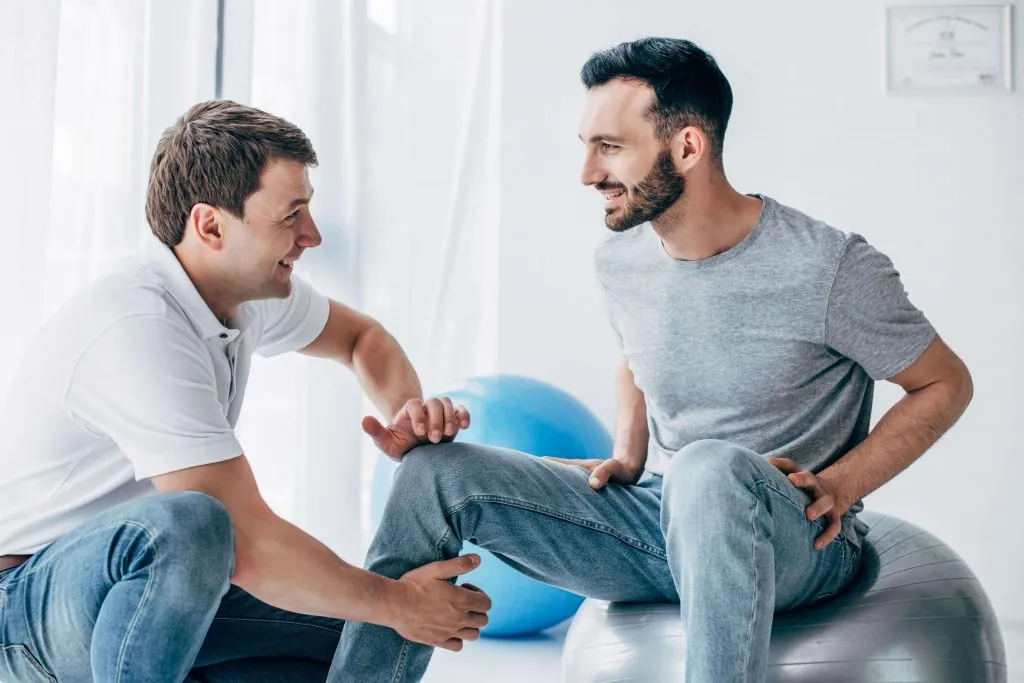
The goal of Active Release Technique (ART) therapy is to restore normal soft tissue mobility by breaking down adhesions and restrictions that can result in dysfunctional movement patterns and pain. Tissue tension disorders can lead to altered muscle recruitment, nerve symptoms such as numbness or tingling, and overall muscle and joint pain.
During an ART session, a specially trained practitioner uses their hands to apply pressure, manipulation, and movement to damaged or abnormal tissue in muscle, fascia, ligament, tendon, and nerves.
Practitioners have successfully used ART therapy for decades to treat symptoms caused by soft tissue conditions, increase blood flow, ease discomfort, and promote faster healing of injuries. The therapy effectively treats both acute and chronic conditions and is often used to treat sports injuries.
Only certified practitioners should perform ART therapy. Trained practitioners are usually physical therapists, massage therapists, chiropractors, or doctors. Certification requires mastery of over 500 specific protocols used to treat affected areas of the body.
What is an Adhesion?
Adhesions are scar tissue inside your body. They are dense, fibrous bands of inflexible scar tissue that stick two surfaces or organs together which impede normal function. Adhesions can form anywhere in the body.
While scar tissue is a natural part of your body’s healing process, it is not normal tissue. It may cause muscles to shorten and weaken, entrapment of nerves, post-surgical complications, bowel obstructions, infertility, chronic pelvic pain, and other health issues.
Breaking up scar tissue and adhesions through ART relieves pain and brings function back to the affected part of the body.
What Causes Soft Tissue Damage?
Acute, chronic, or cumulative injuries can cause scar tissue to form inside or between muscles, nerves, blood vessels, and connective tissue. Trauma, tears, sprains, or strains from overuse of certain muscles, inflammation of the connective tissue that protects and supports muscles and organs, injury to tendons and ligaments, and post-operative conditions all may cause the accumulation of adhesions and tissue damage.
These adhesions restrict and alter movement in the joints or muscles, causing pain, fatigue, and other symptoms.
Pressure caused by poor posture can also cause muscle and tissue adhesions.
What Conditions Does ART Treat?
ART effectively treats a wide range of conditions, including tears, sprains, repetitive strain injuries, and other cumulative or overuse injuries.
Conditions commonly treated with ART include:
- Lower back pain
- Sciatic nerve pain
- Chronic neck pain
- Tension headaches and migraines
- Shoulder sprains, pain, or frozen shoulder
- Repetitive use injuries like tendonitis, which often cause pain in the shoulders, elbows, wrists, knees, legs, or heels
- Carpal tunnel syndrome
- Plantar fasciitis
- Post-operative scarring and adhesions (especially common in those who have had abdominal surgery or gynecological procedures)
Signs of Scar Tissue
A buildup of scar tissue can cause pain, weakness, and restricted movement. One or more of the following may be a signal that scar tissue is causing dysfunction or pain in the body.
- Muscle stiffness in the neck, back, or extremities
- Sharp pain in the heel of the foot
- Decreased range of motion
- Increased weakness
- Lack of flexibility
- Joint inflammation
- Tingling, numbness, or pain in the fingers or other body parts
What to Expect During an ART Session
The goal of ART therapy is to break up scar tissue to restore free movement, resilience, and function of soft tissue, to improve circulation, and to reduce or eliminate pain and stiffness.
MOTION physical therapists are certified ART practitioners and experts in treating soft tissue injuries. After a thorough assessment of your situation, your physical therapy team will design a treatment plan to fit your individual needs.
Your First ART Therapy Session
The more we know about your specific health condition, the better able we can provide you with the relief you need and deserve. You can help by preparing for your first visit. Jot down detailed notes about your symptoms and anything that worsens or relieves the pain and bring those notes to the session.
During your first visit, your physical therapist will conduct a thorough physical examination and functional assessment to determine your starting point. We will ask you to move certain body parts in order to assess their function, so please dress comfortably. Throughout this and every visit, we encourage you to ask questions and provide feedback.
By carefully examining the data we collect, including your medical history, results of the physical exam, findings from the functional assessment, and information provided by you and your physician, we will develop a treatment plan that addresses your specific goals.
Subsequent ART Sessions
During every ART session, your physical therapist will evaluate the texture, tightness, and movement of your soft tissue to determine which areas need treatment. They will then conduct the treatment, answer your questions, and chart your progress.
How is ART Performed?
By applying their hands to your skin, your physical therapist locates the area to be worked on, then applies pressure as you actively move a certain body part, or your PT moves the body part for you. Your PT continues to apply a combination of tension and motion as you or they position your body part to shorten the muscle, then position it to lengthen the muscle. This continues until you feel a release.
Does ART Hurt?
Areas targeted by ART therapy are sensitive, to begin with, so there can be some discomfort during treatment. However, your PT will ask for your feedback throughout the session to ensure the therapy never becomes too painful. Patients often comment that the experience is like a therapeutic massage in that it “hurts so good.” You may experience soreness after the session, which usually resolves within a few days.
How Many Sessions Will I Need?
Some patients experience an improvement of symptoms after the first session. However, it may take up to six visits, depending on the severity of your condition, to achieve full benefits. Sessions usually last about 15 minutes.
Individuals who actively take part in their treatment and recovery program by performing home exercises recommended by their PT often need fewer sessions and help reduce the chances of reoccurrence of symptoms.
Why Choose MOTION PT?
Since 2015, MOTION PT Group has provided transformative physical and occupational therapy services to clients of all ages. We are also proud to offer a specialized Post-Acute COVID Recovery Program for those struggling to regain their health and vitality after suffering from COVID-19.
At MOTION, our mission is to help get you back to what moves you as quickly as possible. We encourage you to work in partnership with us throughout your therapy. We value your input and promise to listen to your feedback. Guided by our values of compassion, empowerment, integrity, and teamwork, we can help you regain mobility.
Our certified ART practitioners can determine if internal scar tissue is causing your pattern of pain, restricted mobility, weakness, tingling, or another discomfort. Whatever the cause, your MOTION physical therapist will design a program designed to help you get back to the quality of life you deserve.
We will also teach you how to take what you learn at your physical therapy sessions home, so you can continue to strengthen your body, improve your quality of life, and get back to doing what you love quickly and safely.
If you are diligent in practicing home exercises as recommended by your MOTION physical therapist, you can help ensure symptoms will not return so you can remain active and free from discomfort.
At MOTION, we are proud of the feedback we receive from current or past clients stating how physical therapy has improved their lives. That is what moves us to do what we do.
Contact us today to schedule an in-clinic or telehealth appointment.
